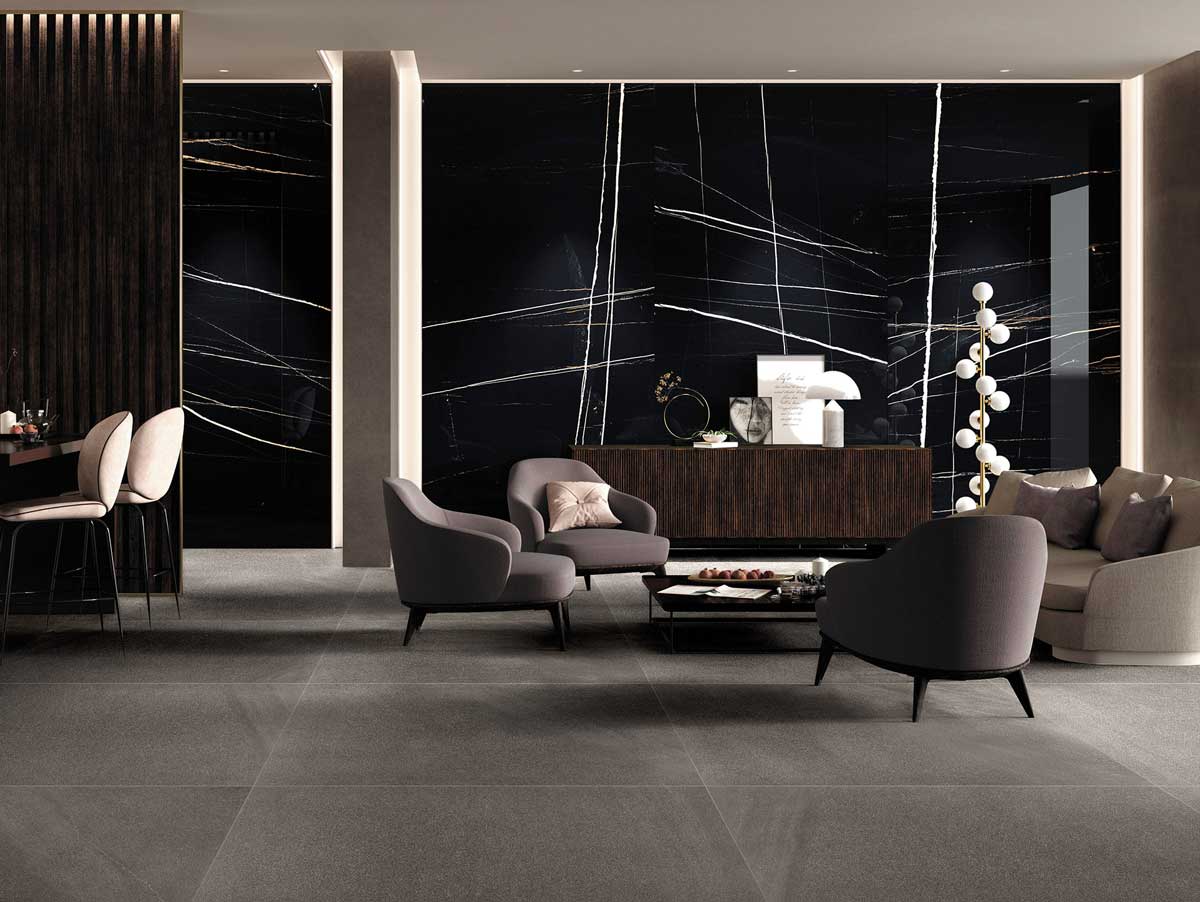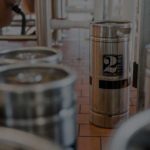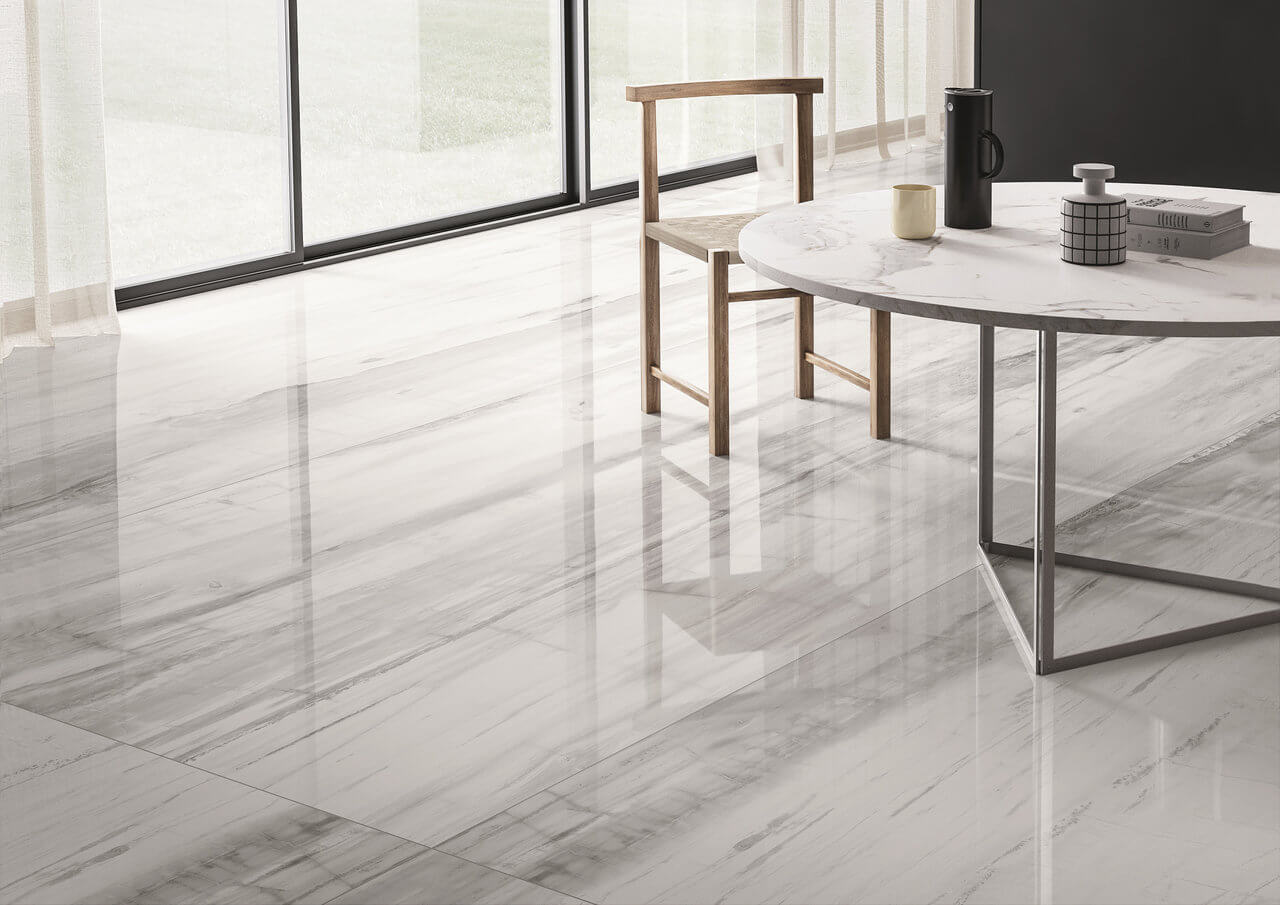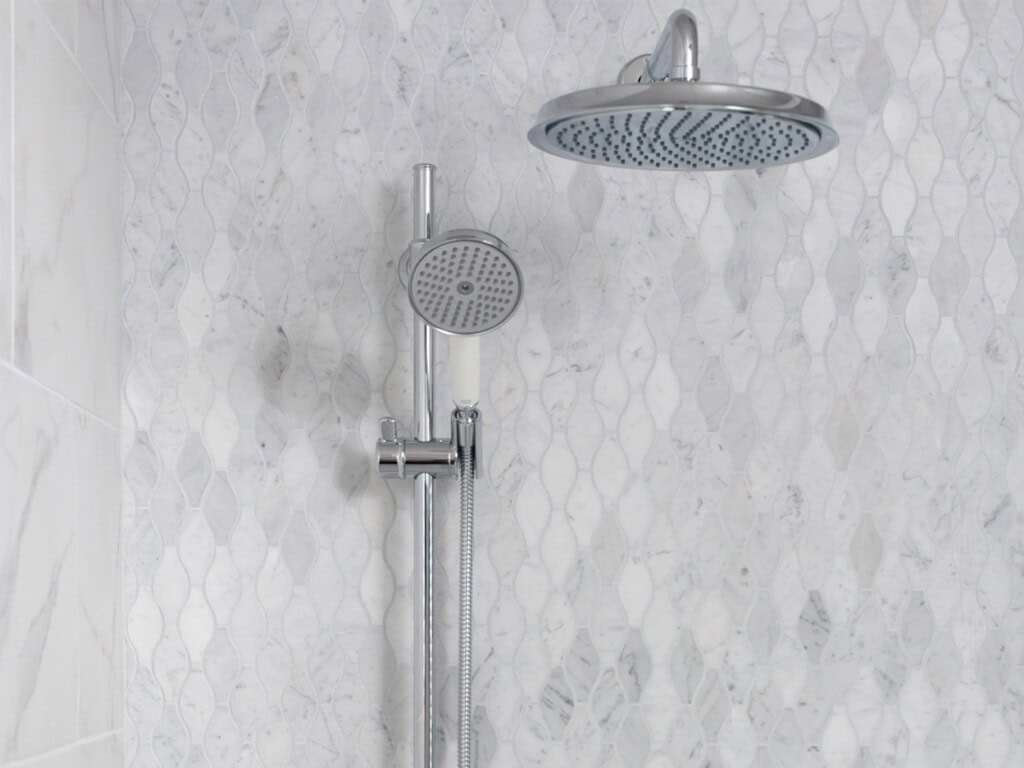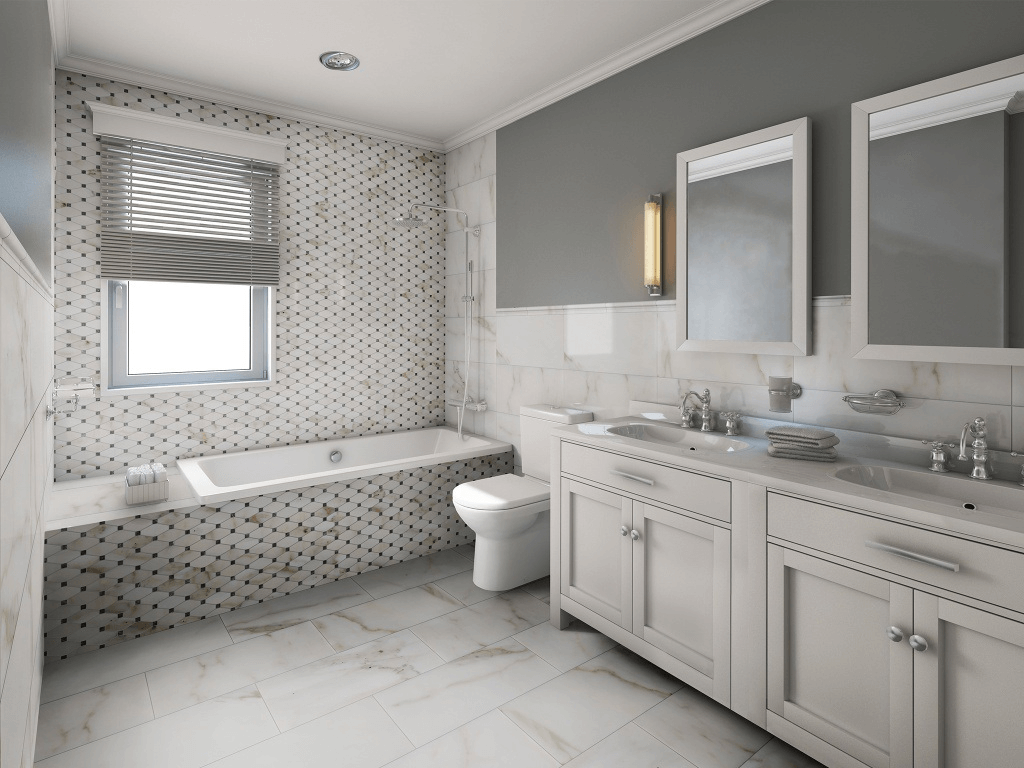Ceramic Tile Material Comparison
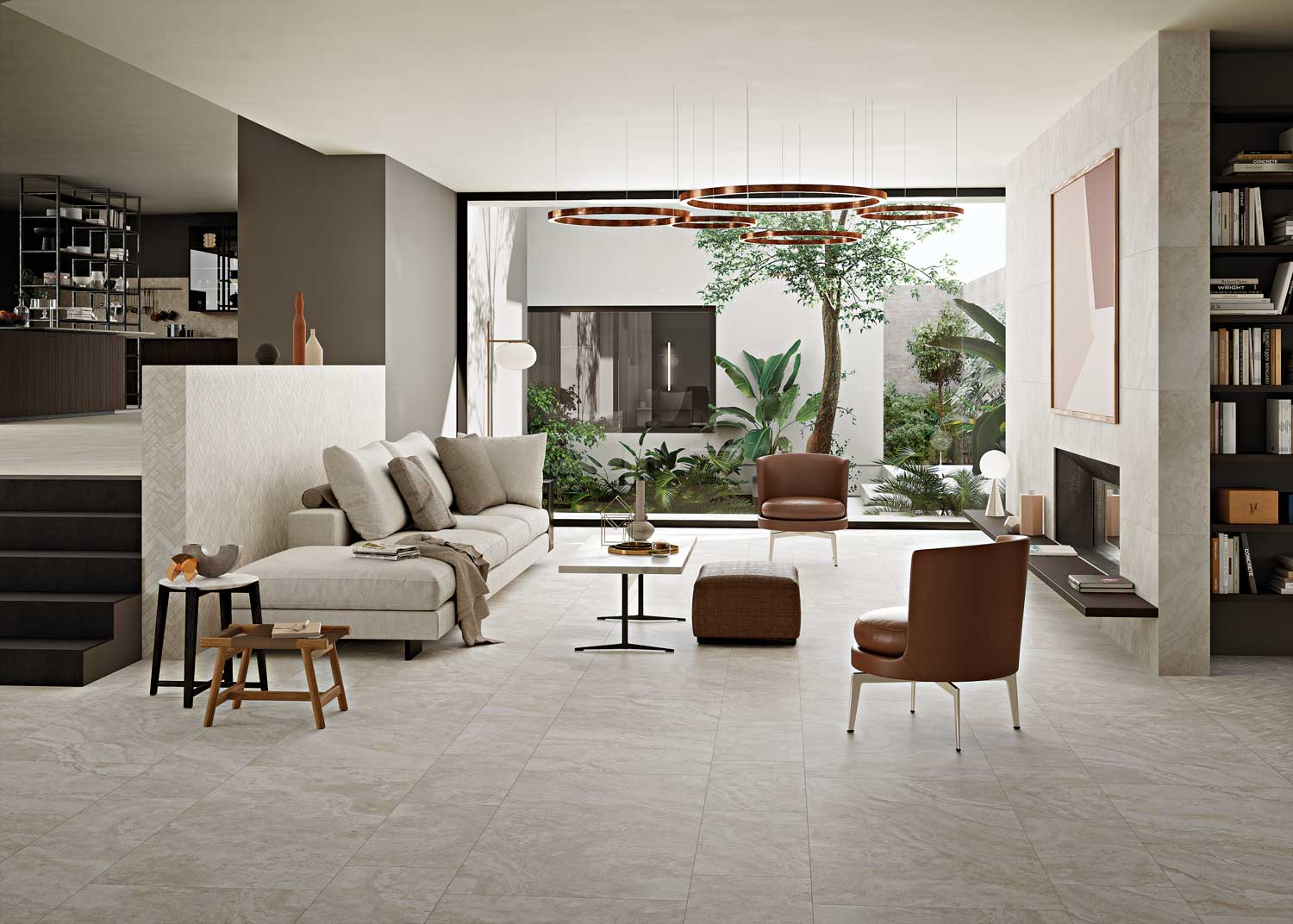
What is Ceramic Tile?
Ceramic tile is time-tested and trusted as a highly durable and beautiful family of surface and building materials.
It is defined as a ceramic surface component, glazed or unglazed, that is fired at a temperature sufficiently high to produce specific, desirable characteristics and properties. This relatively broad definition encompasses different types of ceramic tile, all of which collectively make up what is commonly known as the “ceramic tile family.”
The family includes:
- Wall tile
- Mosaic tile
- Porcelain tile
- Pressed floor tile
- Quarry tile
Each of these tile subsets is ceramic tile and thus shares ceramic tile’s general benefits. For example, it is water-resistant, scratch-resistant, stain-resistant, and flame-resistant. Many ceramic tile options are also frost-and slip-resistant. Each subset is produced slightly differently and may consequently have additional advantages that lend themselves to specific applications.
These qualities make all types ideal for a wide variety of uses, most commonly flooring, backsplashes, and shower tile but also extending to just about any space and application inside — and outside — your home.
In addition to the functional advantages of ceramic tiles, it’s also a smart choice for making a style impact with an endless variety of designs, patterns, shapes, colors, sizes, and textures. The variety available within the ceramic tile family allows you to meet your specific aesthetic needs, all with the quality and durability benefits of ceramic tile.
Types of Ceramic Tile
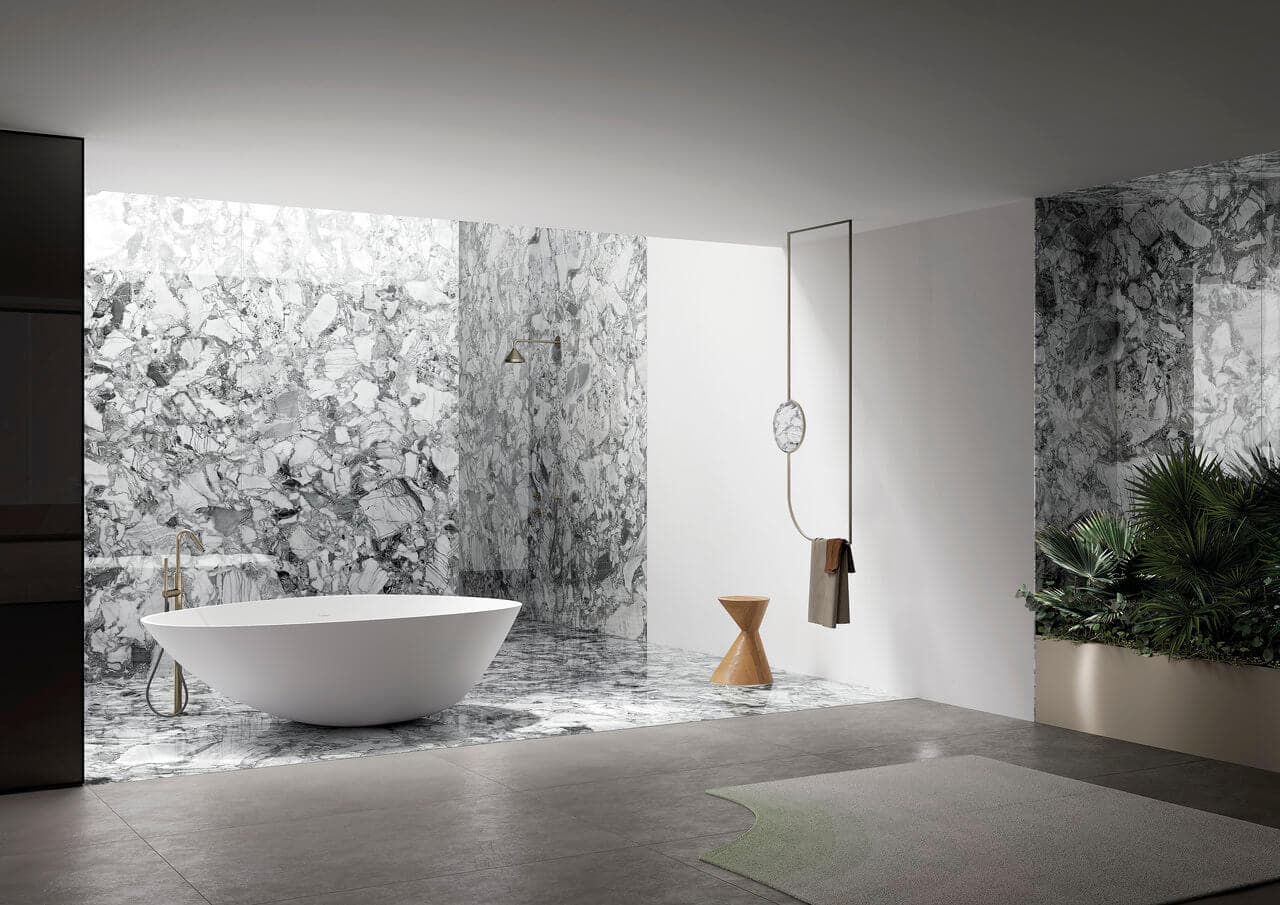
Porcelain Tile
Porcelain tiles have an “impervious” water absorption rate of 0.5% or less and tests show porcelain is harder than granite. Porcelain’s unique composition and manufacturing process give it incredible durability and low water absorption rates. These qualities make porcelain, and other types of ceramic tile, well-suited for water and outdoor applications.
Additionally, gauged porcelain tile panels/slabs are the largest tiles in the ceramic tile family, measuring as wide as five feet and as long as fifteen feet. These XXL tiles can be used for building facades, countertops, and even furniture construction that can be printed with branding and unique designs.
During the manufacturing process, porcelain tiles may be dry-pressed or extruded and glazed or left unglazed.
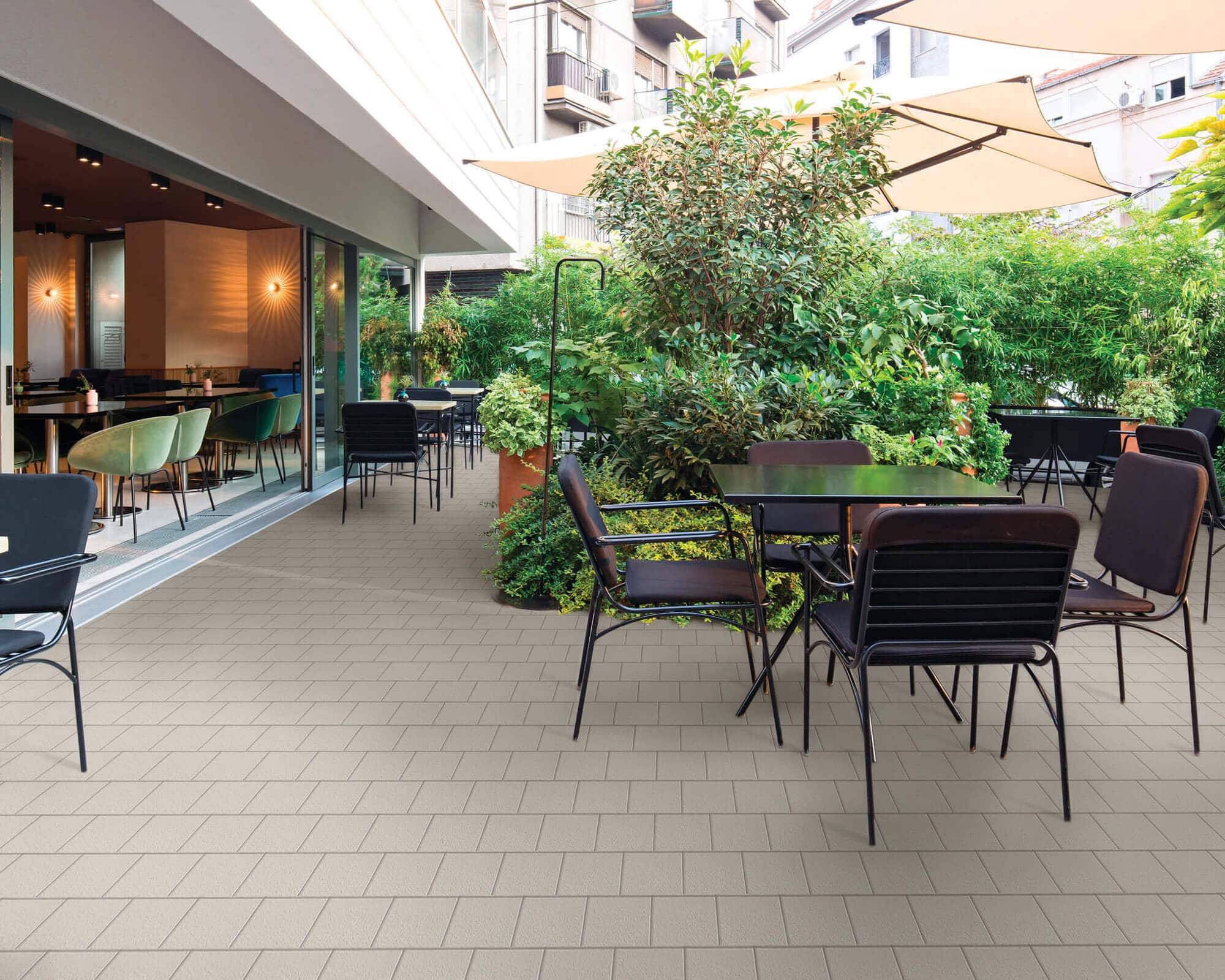
Quarry Tile
Quarry tiles differs from other types of ceramic tiles in that it must be formed by extrusion. While quarry tile technically includes impervious, vitreous, and some semi-vitreous tiles (up to 5% water absorption), many quarry tile options are vitreous (0.5 to 3% water absorption).
Many quarry tiles are red, but brown, tan, black, gray, and other earth tones are also available, depending on how much clay, shale, and other minerals are used in manufacturing. These color options make quarry tiles an ideal choice for creating a rustic or natural aesthetic, and a great alternative to similar looking terra cotta, poured epoxy, or stamped concrete, which may not have the same level of water resistance, durability, or versatility as quarry tile.
Quarry tile’s durability, frost resistance, and heat resistance paired with its low price point make it a great economical flooring option for both indoors and out.
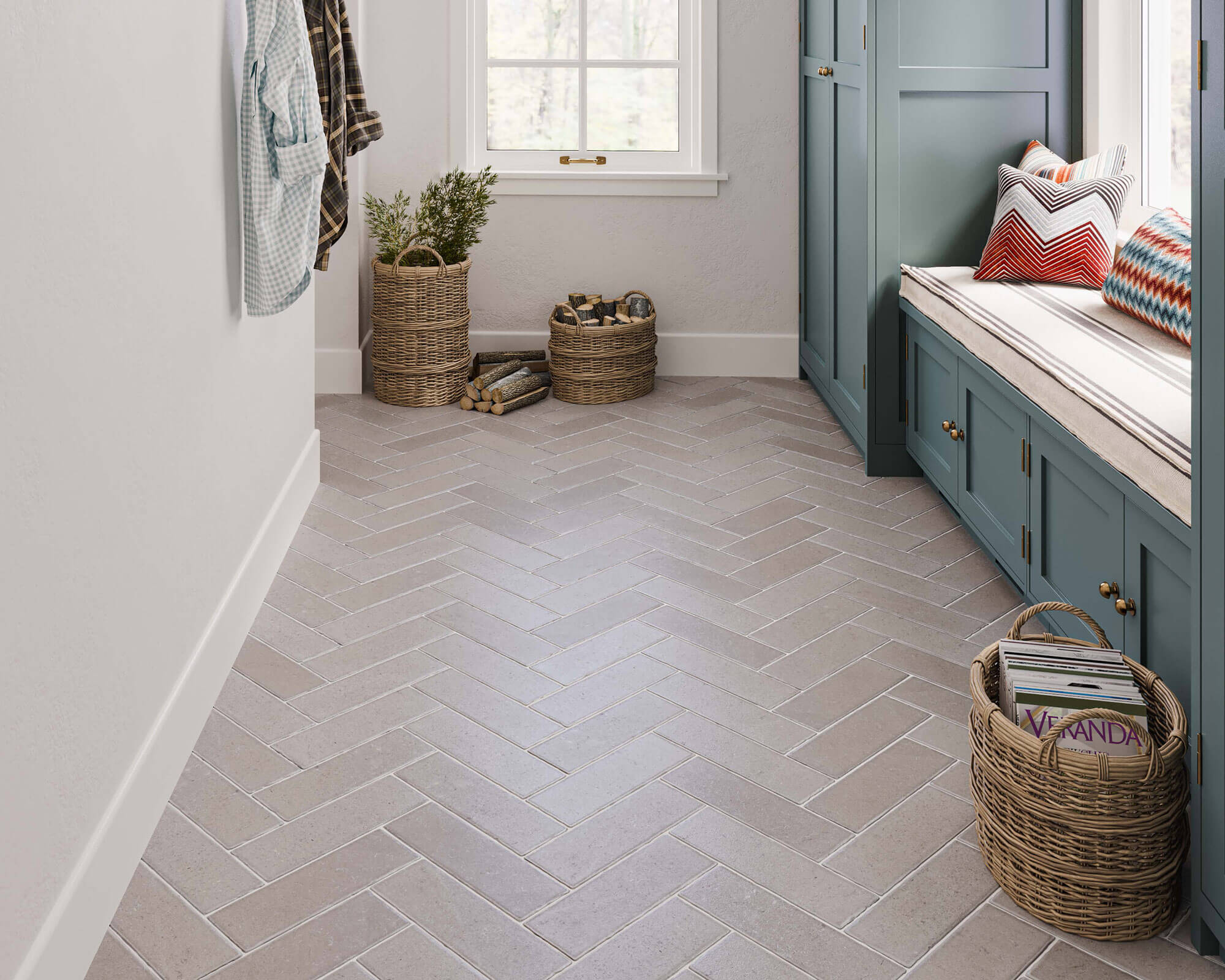
Pressed Floor Tile
Pressed floor tiles are manufactured using the dry pressing forming method and have a surface area of at least nine square inches. As the name suggests, these tiles are primarily intended for flooring, but they can also be used on walls and other areas. Check with the manufacturer of your tile choice to ensure it is appropriate for your project.
Pressed floor tiles may be vitreous (0.5 to 3% water absorption), semi-vitreous (3 to 7%), or nonvitreous (more than 7%).
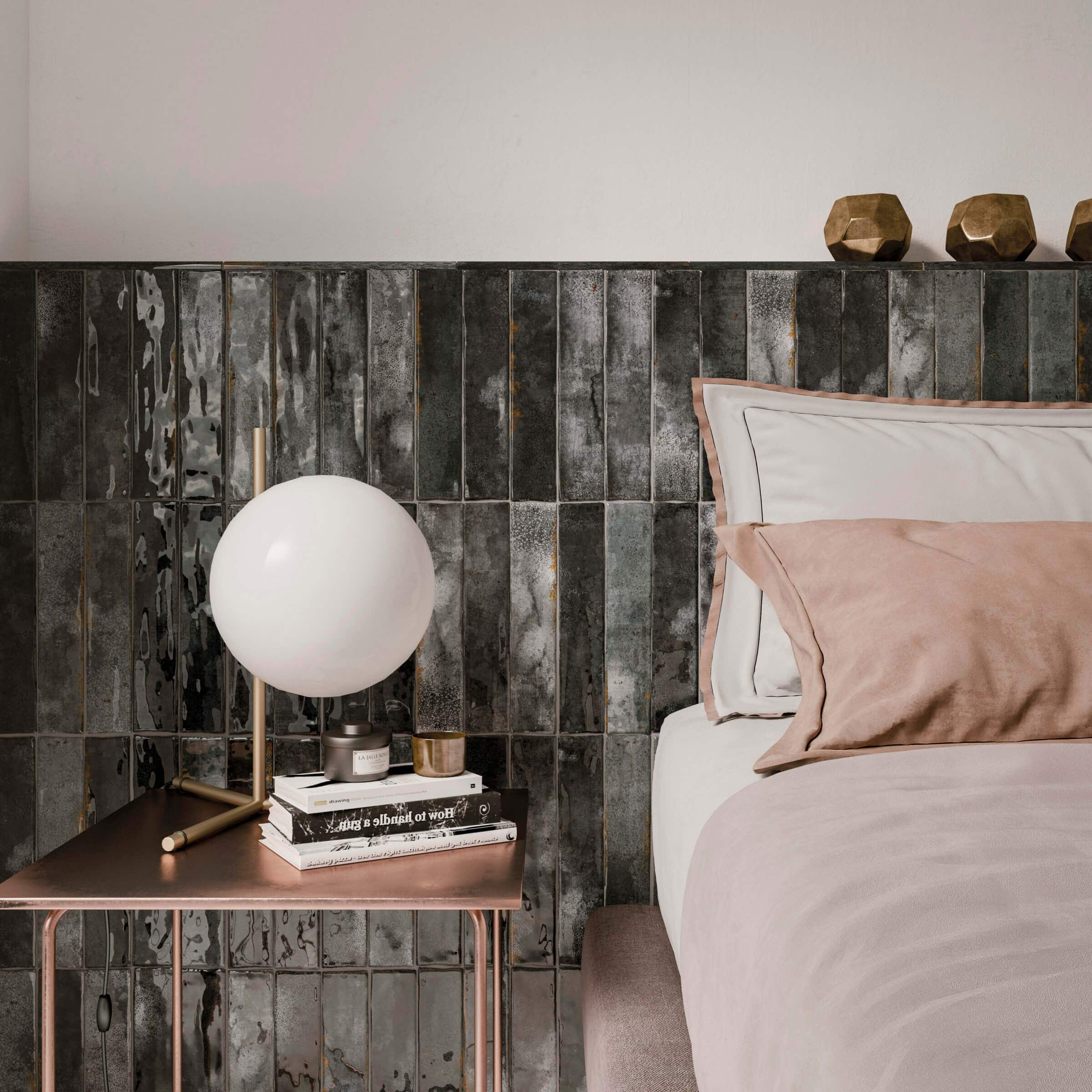
Glazed Wall Tile
As you might imagine from their name, glazed wall tiles are glazed tiles intended for wall applications.
Glazed wall tiles are usually dry-pressed and nonvitreous (more than 7% water absorption). Generally, glazed wall tiles aren’t designed to endure abrasion, excessive impact, or freeze/thaw cycles, meaning that they are best suited for indoor use.
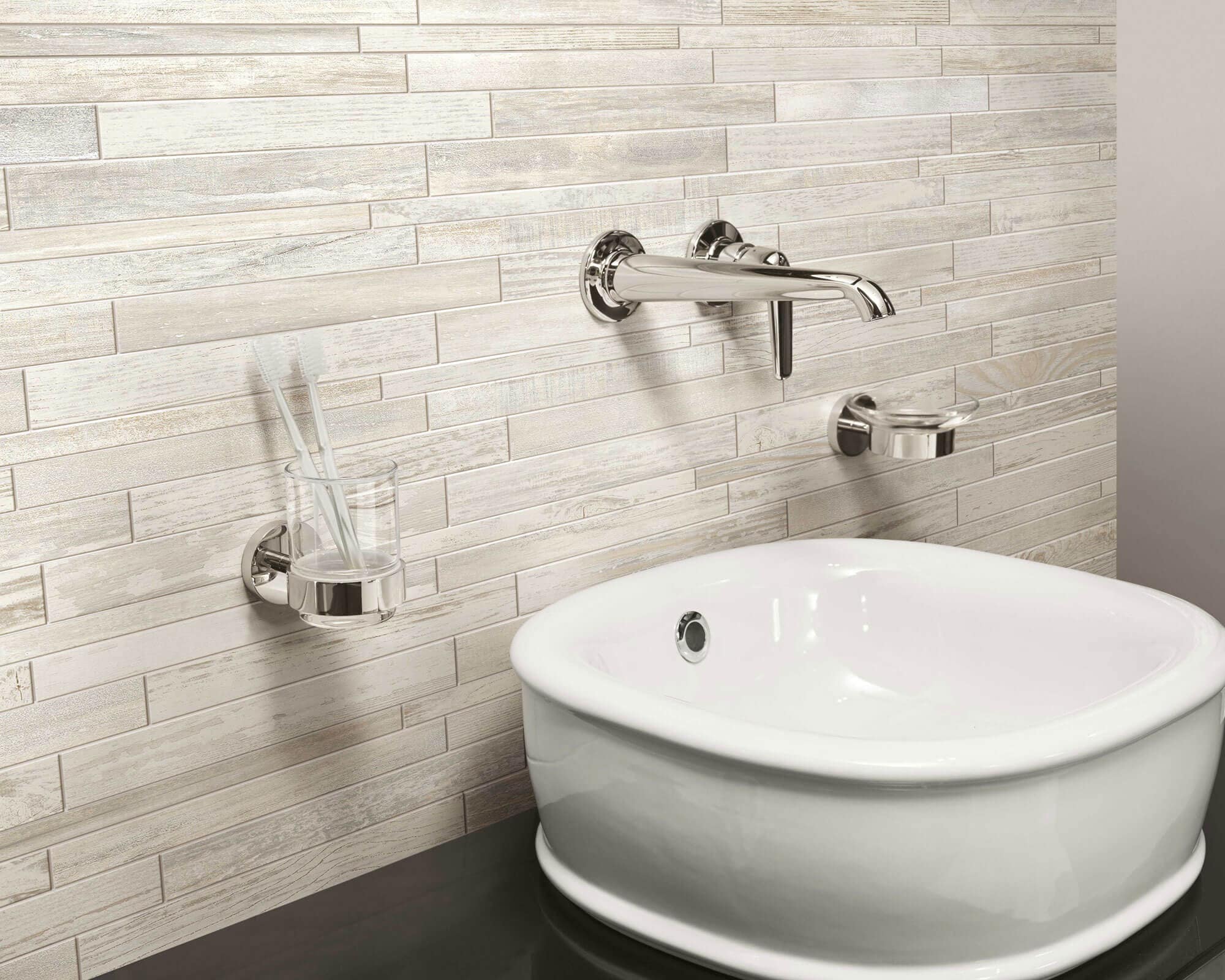
Ceramic Mosaic Tile
Ceramic mosaic tiles are defined as tiles with a surface area of less than nine square inches.
Because of their small size, ceramic mosaic tiles are typically mounted in sheets or strips to facilitate installation. Ceramic mosaic tiles may be made of regular ceramic, porcelain, or quarry tile, so impervious, vitreous, semi-vitreous, and non-vitreous water absorption ratings are all possible.
The intricate manufacturing process of ceramic tiles ensures that even smaller variations, like ceramic mosaic tiles, meet specific standards for quality and durability. Although not part of the technical definition of ceramic mosaic tile, a key element of this tile type is the creativity of the design, involving a combination of colors, tile shapes, and even textures.
The versatility of ceramic tiles, from standard forms to intricate mosaics, highlights their adaptability and aesthetic appeal across various applications.
- Porcelain
-

Porcelain Tile
Porcelain tiles have an “impervious” water absorption rate of 0.5% or less and tests show porcelain is harder than granite. Porcelain’s unique composition and manufacturing process give it incredible durability and low water absorption rates. These qualities make porcelain, and other types of ceramic tile, well-suited for water and outdoor applications.
Additionally, gauged porcelain tile panels/slabs are the largest tiles in the ceramic tile family, measuring as wide as five feet and as long as fifteen feet. These XXL tiles can be used for building facades, countertops, and even furniture construction that can be printed with branding and unique designs.
During the manufacturing process, porcelain tiles may be dry-pressed or extruded and glazed or left unglazed.
- Quarry
-

Quarry Tile
Quarry tiles differs from other types of ceramic tiles in that it must be formed by extrusion. While quarry tile technically includes impervious, vitreous, and some semi-vitreous tiles (up to 5% water absorption), many quarry tile options are vitreous (0.5 to 3% water absorption).
Many quarry tiles are red, but brown, tan, black, gray, and other earth tones are also available, depending on how much clay, shale, and other minerals are used in manufacturing. These color options make quarry tiles an ideal choice for creating a rustic or natural aesthetic, and a great alternative to similar looking terra cotta, poured epoxy, or stamped concrete, which may not have the same level of water resistance, durability, or versatility as quarry tile.
Quarry tile’s durability, frost resistance, and heat resistance paired with its low price point make it a great economical flooring option for both indoors and out.
- Pressed Floor
-

Pressed Floor Tile
Pressed floor tiles are manufactured using the dry pressing forming method and have a surface area of at least nine square inches. As the name suggests, these tiles are primarily intended for flooring, but they can also be used on walls and other areas. Check with the manufacturer of your tile choice to ensure it is appropriate for your project.
Pressed floor tiles may be vitreous (0.5 to 3% water absorption), semi-vitreous (3 to 7%), or nonvitreous (more than 7%).
- Glazed Wall
-

Glazed Wall Tile
As you might imagine from their name, glazed wall tiles are glazed tiles intended for wall applications.
Glazed wall tiles are usually dry-pressed and nonvitreous (more than 7% water absorption). Generally, glazed wall tiles aren’t designed to endure abrasion, excessive impact, or freeze/thaw cycles, meaning that they are best suited for indoor use.
- Ceramic Mosaic
-

Ceramic Mosaic Tile
Ceramic mosaic tiles are defined as tiles with a surface area of less than nine square inches.
Because of their small size, ceramic mosaic tiles are typically mounted in sheets or strips to facilitate installation. Ceramic mosaic tiles may be made of regular ceramic, porcelain, or quarry tile, so impervious, vitreous, semi-vitreous, and non-vitreous water absorption ratings are all possible.
The intricate manufacturing process of ceramic tiles ensures that even smaller variations, like ceramic mosaic tiles, meet specific standards for quality and durability. Although not part of the technical definition of ceramic mosaic tile, a key element of this tile type is the creativity of the design, involving a combination of colors, tile shapes, and even textures.
The versatility of ceramic tiles, from standard forms to intricate mosaics, highlights their adaptability and aesthetic appeal across various applications.
How Ceramic Tile is Made
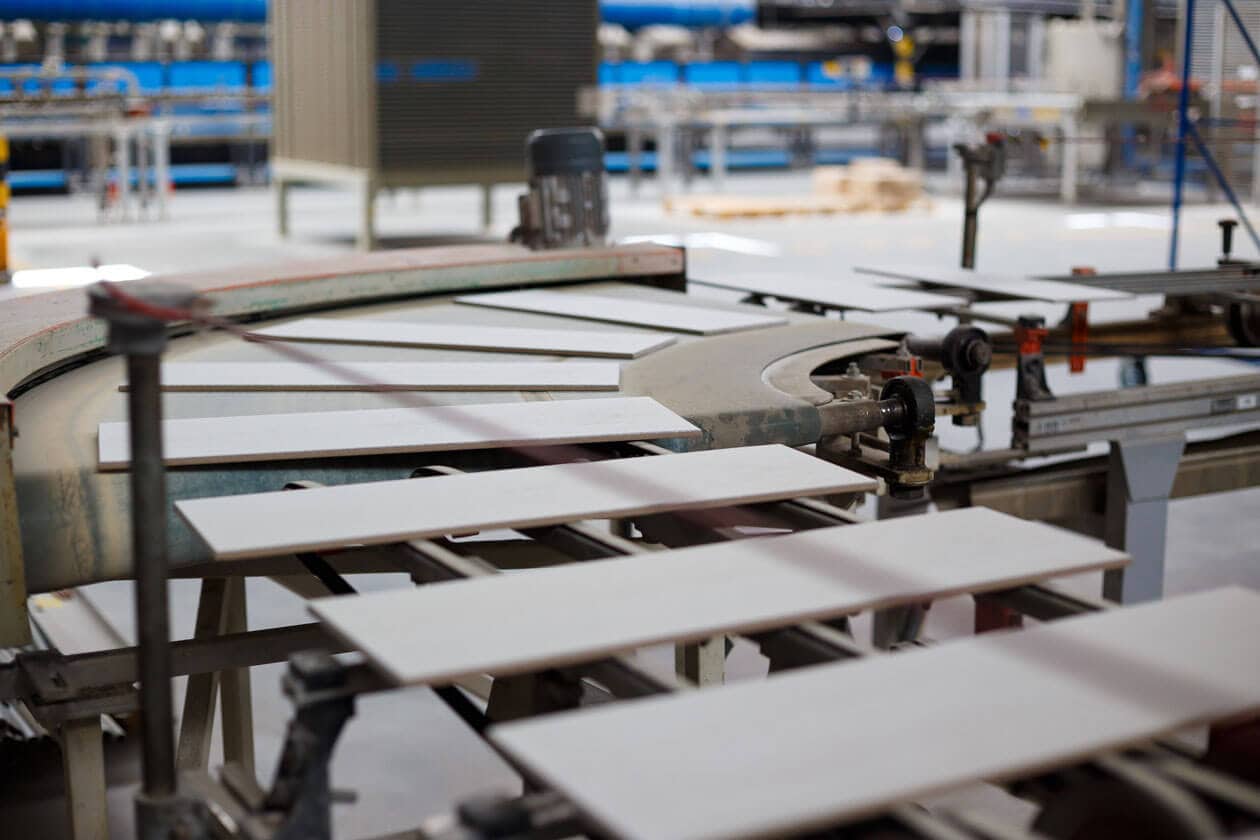
Ceramic tile undergoes manufacturing processes to achieve specific characteristics. The process involves many steps, including these key elements:
- Clays and other naturally occurring materials are typically collected within 500 miles of manufacturing facilities to reduce the energy and emissions that come from long-distance shipping.
- Precision milling processes break down and refine the clay particles so that they can be compressed to a high degree, making ceramic tile dense and moisture-resistant.
- Ceramic tiles are either dry-pressed or extruded into a shape. Dry pressing involves compressing a dry powder mixture in a steel mold at high pressure and then ejecting it, whereas extrusion involves forcing a wet mixture through a mold and then cutting it into shape.
- It is fired at temperatures reaching as high as 2,500 degrees Fahrenheit. The result is a surface with a superior breaking strength that is highly resistant to moisture, stains, and scratches.
Benefits of Ceramic Tile
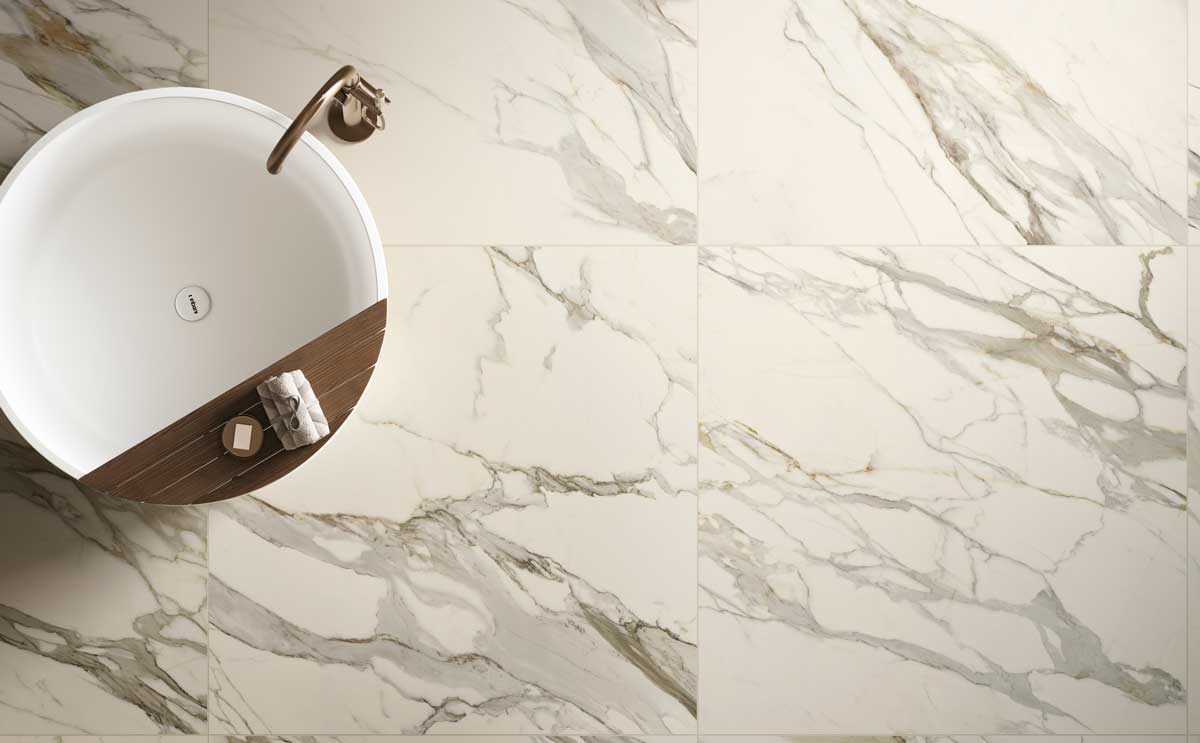
Health & Hygiene
Easy to clean: Water is all that’s needed to wipe up most messes — no harsh chemicals necessary.
Bacteria-resistant: It’s surfaces are inhospitable to the growth of bacteria and other microbes such as mold.
Antimicrobial: Options are available with antimicrobial properties that can suppress and even destroy harmful microorganisms, such as mold, fungi, bacteria, and viruses.
Free of allergens: Ceramic tile surfaces contain no allergens, and allergens in the environment such as dust, dirt, and pollen can’t penetrate a ceramic tile surface.
No volatile organic compounds (VOCs): VOCs are harmful gases that cause various health concerns and can be emitted by some flooring types, but not ceramic, which contains no organic compounds.
No formaldehyde: Some wood products may contain formaldehyde. Certain levels of formaldehyde can irritate asthma and other respiratory disorders.
No polyvinyl chloride (PVC): PVC is a plastic resin found in vinyl flooring. PVC contains phthalates and organotins, both regularly a subject of concern among health experts.
No plastic: The health and environmental concerns associated with plastic aren’t an issue for any type of ceramic tiles.
Nontoxic: Ceramic tile surfaces do not emit any toxic fumes when exposed to heat and fire.
Naturally occurring materials: A healthy choice for both you and the environment!
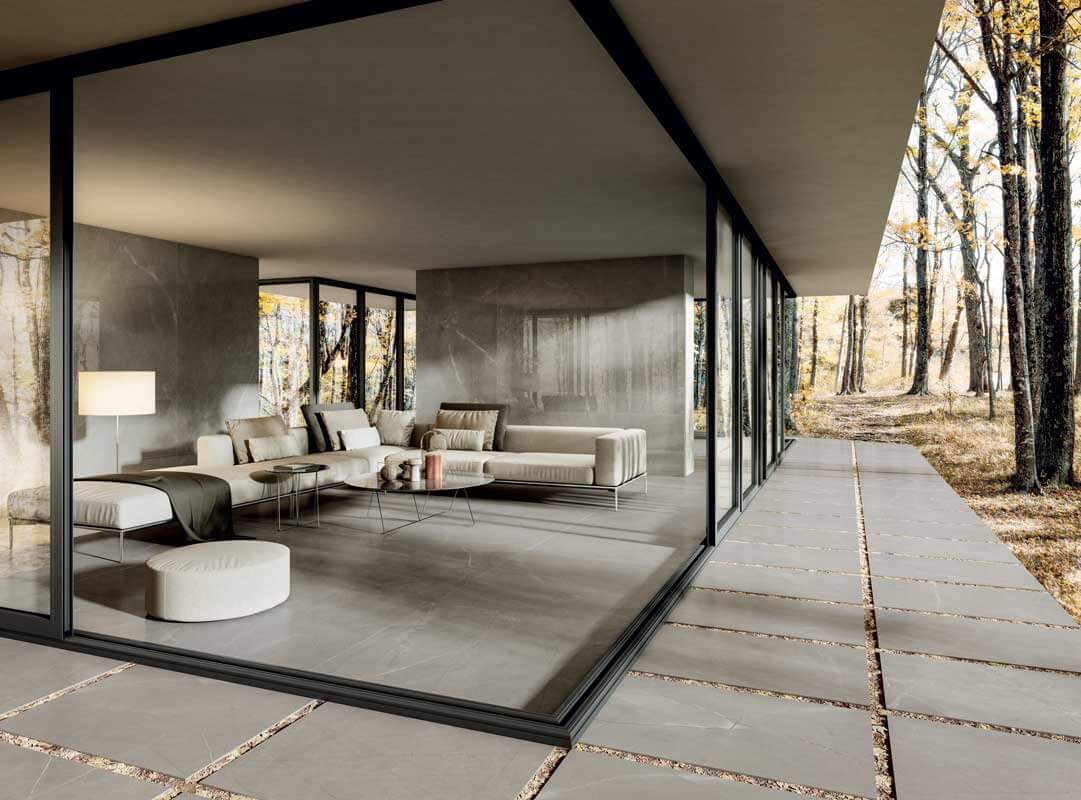
Environmental Sustainability
Lowest carbon footprint of any flooring material in North America: Lowest global warming potential and lowest fossil fuel resource depletion (based on comparison of publicly available flooring environmental product declarations — see Tile: the Natural Choice for more information)
Durable: Lifespan of 75+ years, lowest life cycle cost and environmental impact compared to other flooring materials
Energy-efficient: Inherent thermal mass reduces peak heating and cooling to help lower energy costs, creates the possibility of natural conditioning for more stable and comfortable indoor environments
Recycling: Pre- and post-consumer recycled content available
Salvageable: Can be salvaged in a major renovation and repurposed
Post-life clean fill option: Solid and inert, reusable as construction filler, free of plastic, and does not contribute to growing landfill issues
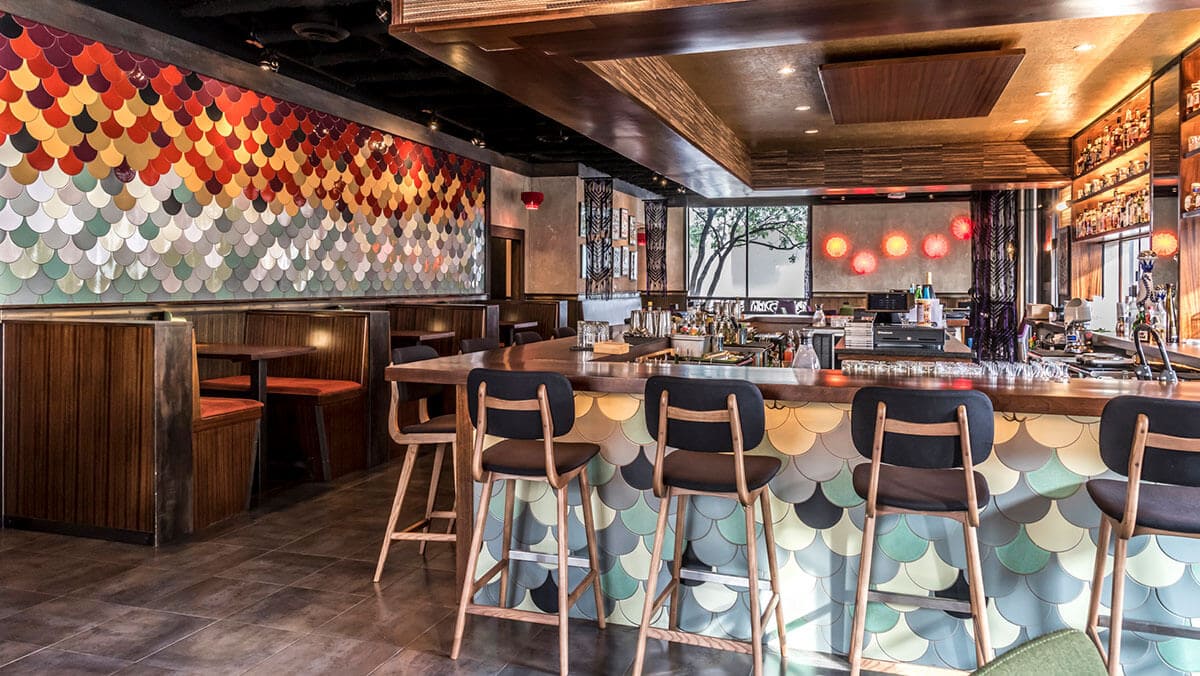
Low Maintenance
Water resistance: All types of ceramic tile are moisture-resistant.
Stain resistance: Stains aren’t a concern for ceramic tile.
Fade resistance: Don’t worry that your tile will lose its luster, as ceramic tile surfaces won’t fade from the sun, indoors or out.
Freeze-thaw resistance: Many options of ceramic tile can withstand the damaging effects of repeated freeze and thaw cycles, making it a great choice for outdoor spaces in every climate.
High breaking strength: Low porosity and high density results in ceramic tile having a high breaking strength.
Scratch resistance: Ceramic tile’s hard surface means scratches and dents are unlikely.
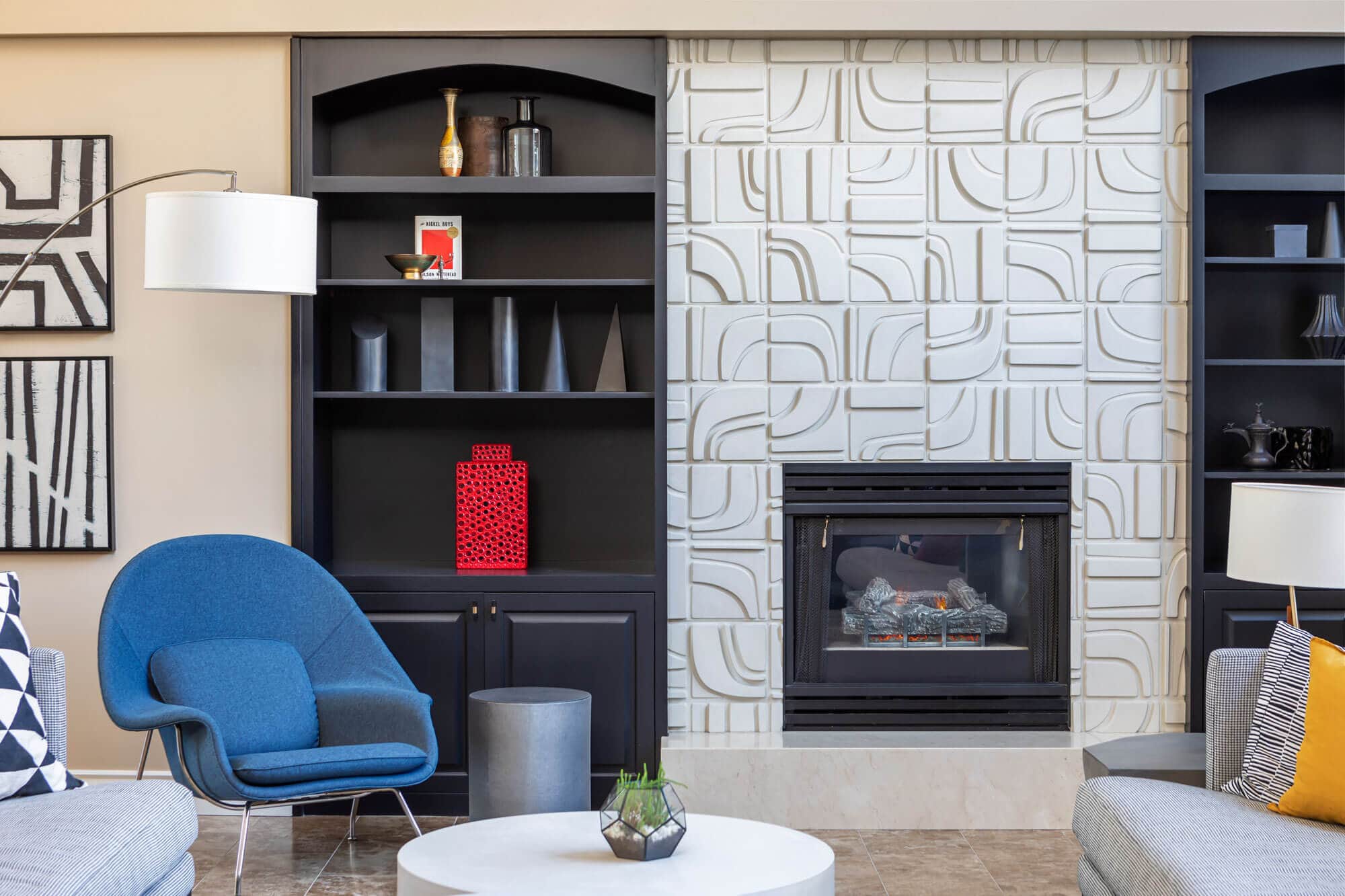
Safety
Slip resistance: Many slip-resistant options are available for flooring exposed to wet conditions or in moisture-rich areas, such as the shower, kitchen, outdoor applications or pool deck. Some options are even available with different textures for even more slip resistance.
Fire resistance: Ceramic tile is nonflammable, meaning that it doesn’t burn, produce smoke, or give off toxic fumes if exposed to heat and fire (and can even reduce flame spread).
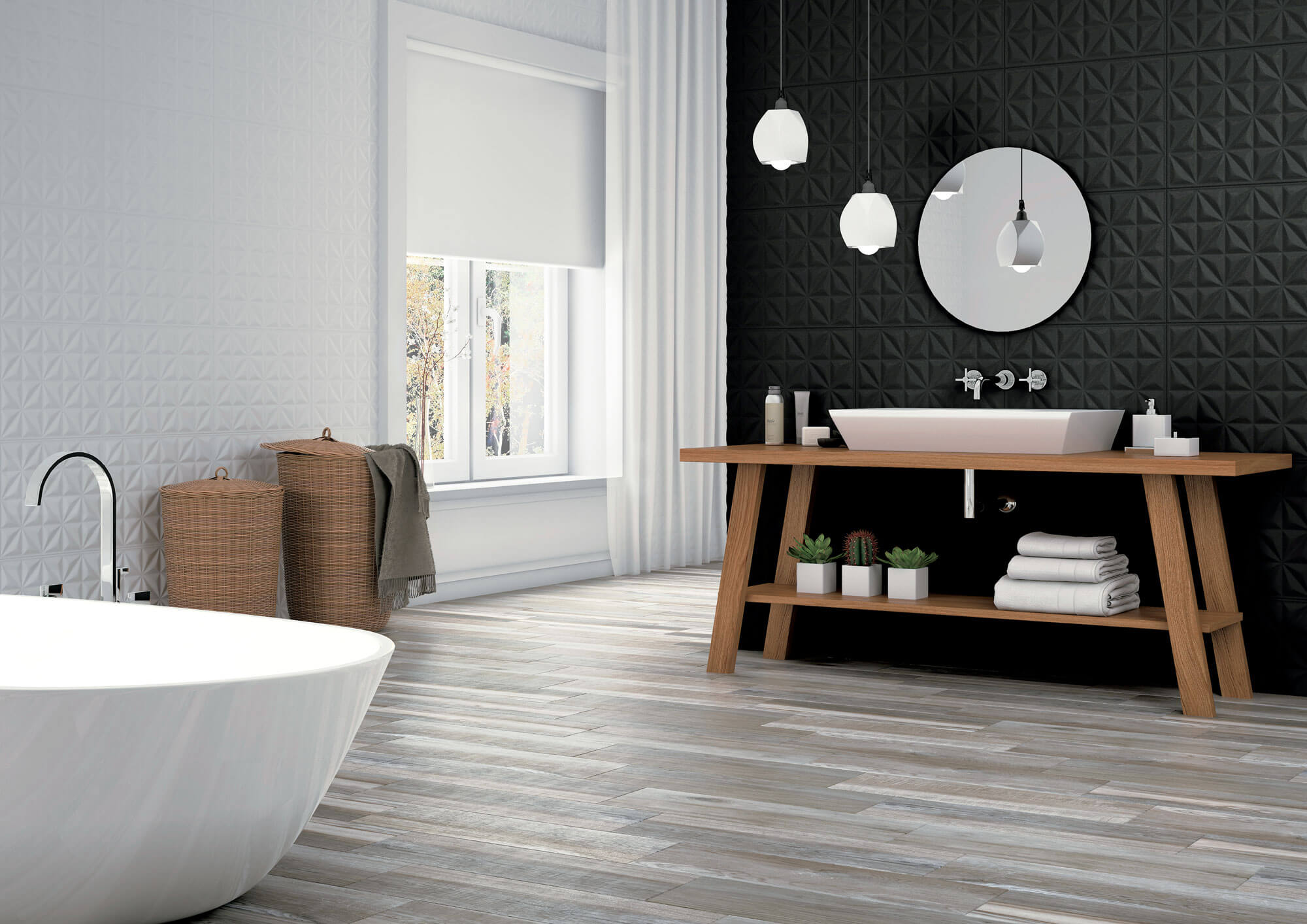
Easy Cleaning
Cleaning ceramic tile is as easy as following these simple steps:
Sweep: Sweep (or brush) away dirt and debris.
Wipe with water: Wipe tile down with a cloth and clean water.
When water isn’t enough:
Neutral cleaners: Tackle tough messes with a PH neutral cleaner or a cleaner designed for tile and grout.
Elbow grease: When necessary, use scrubbers made of plastic or nylon.
- Health & Hygiene
-

Health & Hygiene
Easy to clean: Water is all that’s needed to wipe up most messes — no harsh chemicals necessary.
Bacteria-resistant: It’s surfaces are inhospitable to the growth of bacteria and other microbes such as mold.
Antimicrobial: Options are available with antimicrobial properties that can suppress and even destroy harmful microorganisms, such as mold, fungi, bacteria, and viruses.
Free of allergens: Ceramic tile surfaces contain no allergens, and allergens in the environment such as dust, dirt, and pollen can’t penetrate a ceramic tile surface.
No volatile organic compounds (VOCs): VOCs are harmful gases that cause various health concerns and can be emitted by some flooring types, but not ceramic, which contains no organic compounds.
No formaldehyde: Some wood products may contain formaldehyde. Certain levels of formaldehyde can irritate asthma and other respiratory disorders.
No polyvinyl chloride (PVC): PVC is a plastic resin found in vinyl flooring. PVC contains phthalates and organotins, both regularly a subject of concern among health experts.
No plastic: The health and environmental concerns associated with plastic aren’t an issue for any type of ceramic tiles.
Nontoxic: Ceramic tile surfaces do not emit any toxic fumes when exposed to heat and fire.
Naturally occurring materials: A healthy choice for both you and the environment!
- Environmental Sustainability
-

Environmental Sustainability
Lowest carbon footprint of any flooring material in North America: Lowest global warming potential and lowest fossil fuel resource depletion (based on comparison of publicly available flooring environmental product declarations — see Tile: the Natural Choice for more information)
Durable: Lifespan of 75+ years, lowest life cycle cost and environmental impact compared to other flooring materials
Energy-efficient: Inherent thermal mass reduces peak heating and cooling to help lower energy costs, creates the possibility of natural conditioning for more stable and comfortable indoor environments
Recycling: Pre- and post-consumer recycled content available
Salvageable: Can be salvaged in a major renovation and repurposed
Post-life clean fill option: Solid and inert, reusable as construction filler, free of plastic, and does not contribute to growing landfill issues
- Low Maintenance
-

Low Maintenance
Water resistance: All types of ceramic tile are moisture-resistant.
Stain resistance: Stains aren’t a concern for ceramic tile.
Fade resistance: Don’t worry that your tile will lose its luster, as ceramic tile surfaces won’t fade from the sun, indoors or out.
Freeze-thaw resistance: Many options of ceramic tile can withstand the damaging effects of repeated freeze and thaw cycles, making it a great choice for outdoor spaces in every climate.
High breaking strength: Low porosity and high density results in ceramic tile having a high breaking strength.
Scratch resistance: Ceramic tile’s hard surface means scratches and dents are unlikely.
- Safety
-

Safety
Slip resistance: Many slip-resistant options are available for flooring exposed to wet conditions or in moisture-rich areas, such as the shower, kitchen, outdoor applications or pool deck. Some options are even available with different textures for even more slip resistance.
Fire resistance: Ceramic tile is nonflammable, meaning that it doesn’t burn, produce smoke, or give off toxic fumes if exposed to heat and fire (and can even reduce flame spread).
- Easy Cleaning
-

Easy Cleaning
Cleaning ceramic tile is as easy as following these simple steps:
Sweep: Sweep (or brush) away dirt and debris.
Wipe with water: Wipe tile down with a cloth and clean water.
When water isn’t enough:
Neutral cleaners: Tackle tough messes with a PH neutral cleaner or a cleaner designed for tile and grout.
Elbow grease: When necessary, use scrubbers made of plastic or nylon.
Case Studies
Related Blog Posts

Download #OutsideTheBox: Your Tile Buying Guide…and get started now!

